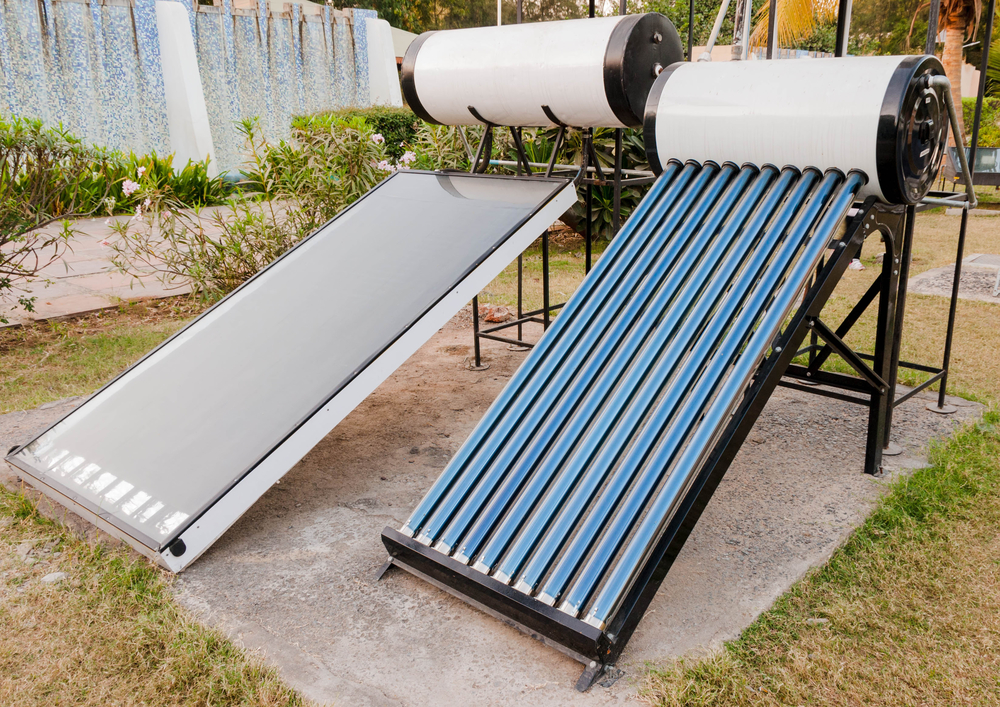Table Of Content

A radiant floor heating system uses a network of pipes embedded in the floor to circulate heated water from a solar-powered boiler. The heat from the hot water in the pipes transfers the heat to the air in the rooms. Hydronic systems have solar collectors to absorb the sun’s energy and convert it into heat energy.
How Wind Turbines are Helping to Solve the Global Energy Crisis
One common way to use solar power is with solar heating systems, which convert solar energy into usable heat instead of electricity. However, you may need to make several upgrades to improve performance, such as installing energy-efficient windows, building a sunroom, adding thermal mass material, and improving insulation. Adding an active solar heating system is often a more cost-effective option for existing homes. To learn more about types of liquid solar collectors, their sizing, maintenance, and other issues, see solar water heating. If you’re planning to sell your home anytime soon, improved home equity is yet another benefit of a solar hot water system.
The Ultimate Guide to Solar Heating
Right now, the best way to install solar is through a qualified professional who holds a certification to do so and works with high-quality solar panels. The industry-standard certification is awarded through the North American Board of Certified Energy Practitioners (NABCEP). Solar co-ops and Solarize campaigns can also help you start the process of going solar. Ultimately, as the number of residents who participate in the program increase, the cost of the installations will decrease. If you are living in one of the sunny locations, going solar is the best gift you can give yourself as well as nature.
What is solar thermal?
These heating systems reduce carbon emissions and can work along your existing HVAC system. They cost less to install than heat pumps and can significantly reduce your fossil fuel use. Similar to traditional panels, solar heating uses sunlight to generate energy for your home. However, solar heating transforms this energy into heat instead of electricity. We’ll take a closer look at the types of solar heating technology available below.
They thought getting their home off fossil fuels would be straightforward. Chaos ensued. - Grist
They thought getting their home off fossil fuels would be straightforward. Chaos ensued..
Posted: Thu, 21 Mar 2024 07:00:00 GMT [source]
Operational Costs

Specialty or custom tanks may be necessary in systems with very large storage requirements. They are usually stainless steel, fiberglass, or high temperature plastic. Each type of tank has its advantages and disadvantages, and all types require careful placement because of their size and weight. It may be more practical to use several smaller tanks rather than one large one.
Researchers develop practical solar heater for poultry houses - Feedstuffs
Researchers develop practical solar heater for poultry houses.
Posted: Sun, 01 Oct 2023 00:07:56 GMT [source]
Instead of relying upon natural gas or electricity to power your hot water heater, solar thermal hot water heaters allow you to convert the heat from the sun into hot water for your home or business. To learn more about how these technologies function, check out our solar hot water explainer. Solar water heaters tend to cost more to install compared to solar air heaters. However, all types of solar heating systems will result in significant energy and utility bill savings over time. There are three main types of solar heaters for the home – solar water heaters, solar pool heaters, and solar air heaters.
The main differences between active and passive solar heating
This heating technology makes your pool usable throughout the year and warms the water more cost-effectively than traditional electric or gas pool heaters. Ground- or roof-mounted solar collectors heat the water and circulate it back to your pool. Solar pool heaters can work automatically and contain sensors that actively regulate the water temperature. The solar collectors may be placed on your rooftops or walls for maximum exposure to sunlight.
Costs of Solar Heating
You need a backup system to provide you heat 24×7 when the sun isn’t shining. You may have to add a switch mechanism to have better control over the functioning of the backup system. A single evacuated tube collector can cost in the range of $1,000-$2,500.
Hot Water Baseboards or Radiators
Additionally, there is evidence homes with solar panels sell faster than those without. In 2008, California homes with energy efficient features and PV were found to sell faster than homes that consume more energy. As the name suggests, this method of capturing the sun’s energy involves the least invasive technology. By placing materials with high thermal mass in your living space, it is possible to trap the heat energy coming through the windows, doors, walls, and floors of your home.
Modernize can pair you with three to four pros in your area, so you can compare options and save time and money. We recommend calling an HVAC professional or solar company to select the best solar collector for your home heating system. Jagpreet is a specialist in digital communication and creative writing. During her career, she has produced a wide range of content including blogs, articles, case studies, brochures, user manuals, and other creative assets. For its analyses, NREL uses an average system size of 7.15 kilowatts direct-current with a 3-11 kilowatt range.
However, most building codes require a backup heating system, so your solar space heaters should be integrated with an existing heating system. Active systems can work independently or with your current HVAC system. Homeowners can use their existing ductwork or install a separate system for the solar air heater. The effectiveness of passive air heating, meanwhile, depends heavily on your home’s insulation, design, and sunlight exposure. Solar air heating works by drawing in fresh air and heating it with coated black aluminum panels. The warmed air then passes through your home’s ductwork using a solar-powered fan.
The heart of the control system is a differential thermostat, which measures the difference in temperature between the collectors and storage unit. When the collectors are 10° to 20°F (5.6° to 11°C) warmer than the storage unit, the thermostat turns on a pump or fan to circulate water or air through the collector to heat the storage medium or the house. Before installing a solar energy system, you should investigate local building codes, zoning ordinances, and subdivision covenants, as well as any special regulations pertaining to the site. You will probably need a building permit to install a solar energy system on an existing building. This is the place to learn more about what type of solar pool heating equipment your specific pool may need and what it will cost.
And it’s fairly costly — expect to spend between $9,000 to $22,000 on average for a 1,500 square foot home. But it’s undoubtedly one of the most comfortable and quietest heating systems around. The sun is one of the most reliable sources of warmth on Earth, so why not use it for your home heating? Solar heating systems are nothing new – we humans have been applying the concept for millennia. The ancient Greeks, for instance, had ‘sunrooms’ – indoor spaces kept warm through the efficient capture and storage of solar energy.

No comments:
Post a Comment